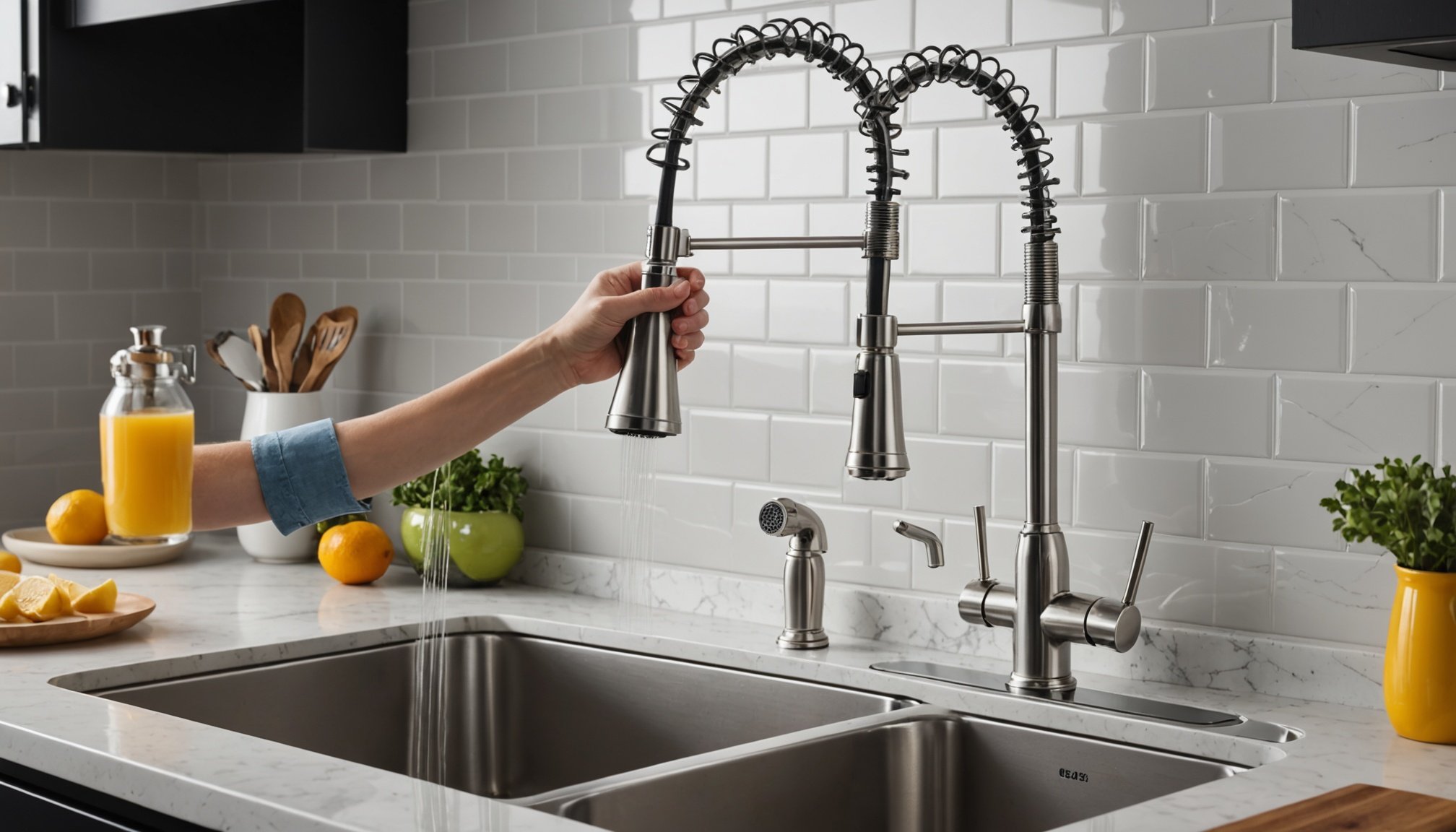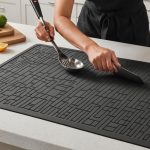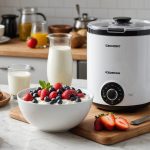Understanding Pull-Down Sprayer Faucets
A pull-down sprayer kitchen faucet boasts a range of features that enhance both aesthetic appeal and practical use. One primary attribute is the extendable hose, allowing users to direct water exactly where needed. This feature is particularly convenient when washing large pots or filling buckets that don’t fit in the sink.
The functionality of pull-down sprayer faucets makes them a preferred choice for home chefs and busy kitchens. With a single motion, the faucet head can extend downwards, offering greater control over the water flow. This adaptability ensures precise cleaning and efficient rinsing, crucial during meal preparation and cleanup.
In parallel : Revolutionize your kitchen: enhance space and efficiency with creative revolving spice racks
Moreover, these faucets often come equipped with multiple spray modes, allowing you to switch from a concentrated stream to a softer mist. These features contribute significantly to the versatility of the kitchen workspace, adapting to various needs seamlessly.
In everyday cooking, a pull-down sprayer kitchen faucet is invaluable. It simplifies tasks like washing vegetables, cleaning spatulas, and even bathing small pets. The convenience and ergonomic design reduce repetitive strain, making the kitchen experience more enjoyable and efficient for everyone involved.
Also to read : Ultimate guide to choosing the ideal potato masher: safeguard your non-stick cookware from scratches!
Key Features to Look For
Choosing kitchen faucet features that suit your needs can enhance functionality and style in your space. When considering durability, the material choice is crucial. Faucets made from stainless steel or brass are often more durable and resistant to corrosion, which ensures longevity even in a busy kitchen environment.
The ease of cleaning is another significant factor. A spray head design that incorporates easy-to-clean nozzle technology can significantly reduce maintenance time. Some designs include rubber nozzles that simply wipe clean, preventing mineral build-up.
When it comes to installation, the faucet’s compatibility with your kitchen sink is vital. There are various installation types such as single-hole, center-set, and wall-mounted faucets. It’s essential to ensure the chosen type aligns with your sink’s design and existing holes. Moreover, some faucets offer adjustable mounting hardware, allowing more flexibility during installation.
Selecting the right kitchen faucet requires understanding these features to make an informed decision that meets both practical needs and aesthetic preferences. In this way, your kitchen experience can be effortless and enjoyable.
Comparing Popular Brands
Exploring faucet brands requires more than just evaluating style or price. Understanding core features and analysing consumer reviews is key in making an informed choice.
Brand A Overview
Brand A is recognised for its innovative design and durability across several model comparisons. With a focus on eco-friendly technology, Brand A has gained positive feedback for performance and sustainability. Consumers appreciate the ease of installation and maintenance, yet some have noted issues with the customer service responsiveness. The warranty coverage, however, is comprehensive, offering reliability.
Brand B Overview
Brand B offers sleek designs and is particularly celebrated for its affordability without sacrificing quality. User reviews highlight its straightforward installation and reliable performance. However, a few consumer reviews mention occasional issues with water pressure. The warranty is standard but satisfactory, reflecting the brand’s stable reputation.
Brand C Overview
Brand C is synonymous with luxury and high-end materials. It excels in providing cutting-edge features such as touchless operation, elevating the user experience. Although highly praised for aesthetics and functionality, its higher cost is a concern for some consumers. Brand C counters this with robust warranty terms which stand out in model comparison discussions.
The key differences among these brands lie in their approach: innovation, affordability, or luxury. Understanding their user reviews and brand reputations can guide buyers in selecting the best fit.
Durability Testing and Material Analysis
When considering a faucet’s durability, it’s essential to explore different material types. Each material offers distinct strengths and weaknesses. Stainless steel, for instance, is lauded for its robust performance and resistance to rust. It undergoes rigorous testing to ensure its long-lasting performance in both domestic and commercial settings. Despite its durability, stainless steel can be prone to showing water spots, which can detract from its appearance.
Conversely, plastic faucets may be more affordable and come in various designs. However, durability testing often highlights their potential fragility over time, especially under continuous use or exposure to hot water. Users frequently note that plastic components can become brittle or crack, leading to leakage.
Brass faucets strike a balance with their excellent resistance to corrosion and aesthetic appeal. These faucets undergo strict durability testing, often revealing their capability to maintain long-lasting performance despite environmental factors. Yet, brass can tarnish, requiring polishing to retain its shine.
Real-life examples underscore potential failures: stainless steel may dent, plastic might crack, and brass can tarnish. Understanding these faucet durability aspects helps consumers make informed decisions tailored to their specific needs.
Easy Cleaning Strategies
Keeping your faucet well-maintained ensures a sparkling, efficient tap that’s hassle-free to clean. One essential cleaning tip is to use non-abrasive cleaners, such as mild soap mixed with warm water. This helps prevent damage while effectively removing grime. For those stubborn water spots, using a vinegar solution can be surprisingly effective.
Explore features like a user-friendly design that aids in easy upkeep. Look for faucets with smooth finishes and minimal crevices where dirt tends to build up. Some designs include quick-release aerators, making it effortless to disassemble and rinse parts. These elements not only simplify cleaning but contribute significantly to faucet maintenance.
Regarding faucet maintenance, it’s important to establish a routine. Regularly check for leaks and calcium or lime buildups. Aim to clean aerators every three months — more if your water is hard. This habit can help in prolonging the life of your faucet. Easy tasks such as this enhance faucet performance and maintain its appearance.
Staying consistent with these cleaning and maintenance strategies ensures optimal functionality while saving time. Embrace these approaches for a cleaner, more efficient faucet that’s always ready to use.
Expert Recommendations
When it comes to choosing the best faucet models, expert picks can guide you to making an informed decision. These experts meticulously evaluate models based on performance and value, offering professional advice tailored to different needs.
Top-Rated Models
Experts focus on features like durability, water efficiency, and ease of installation. Faucet models that excel in these areas consistently top recommendation lists. These faucets often combine innovative design with functionality, making them ideal for both modern and traditional kitchens.
Performance and Value Insights
Professional advice typically weighs the long-term value against initial cost. Some experts emphasize investing in more costly options for benefits such as enhanced durability and minimal maintenance. For example, models with cutting-edge ceramic disc valves may cost more upfront but provide a leak-free experience over time.
Budget vs. Premium Options
When considering budget versus premium options, experts often highlight that the best choice aligns with individual needs. While higher-end models boast advanced features like smart technology, budget-friendly options can offer reliable performance without the frills. Understanding your specific use case helps narrow down favorable choices that balance affordability and functionality. In conclusion, following expert picks and professional advice ensures that you select a faucet model capable of meeting your requirements comprehensively.
Installation Tips and Guidelines
Embarking on a faucet installation project can be an exciting yet challenging task. For those considering the DIY route, starting with a step-by-step guide is essential. Begin by gathering necessary tools like a basin wrench, a screwdriver, and plumbing tape.
- Shut off the water supply to prevent any unexpected leakage.
- Remove the old faucet by loosening the nuts underneath the sink.
- Carefully clean the area to ensure a good seal for the new installation.
Next, apply plumber advice and ensure a proper fit by using the supplied gasket.
Common obstacles often include tight spaces under the sink which might make maneuvering tough. For these situations, utilize a compact basin wrench. Additionally, always check all connections thoroughly to avoid a leaky fixture later.
When contemplating whether to opt for professional help, weigh the complexities against your DIY skills. A professional installation might be ideal if dealing with an unfamiliar plumbing setup or complex modifications are needed. It assures peace of mind and warranty continuation. Nevertheless, many home improvement enthusiasts find joy in successfully completing such projects on their own with the correct guidance and perseverance.
Maintaining Your Faucet for Longevity
Proper faucet maintenance is crucial for ensuring longevity and preventing costly repairs. A well-maintained faucet not only provides convenience but also enhances the overall look of your kitchen. Regular checks serve as a preventive measure.
Regular Maintenance Checklist
Here’s a quick checklist to help you keep your faucet in optimal condition:
- Inspect for leaks: Regularly check under the sink and around the faucet spout for any leakage.
- Clean aerators and filters: This prevents mineral deposits from affecting water flow.
- Check the handle: Ensure it operates smoothly without sticking or squeaking.
Signs That Indicate Maintenance is Needed
If you notice inconsistent water flow, it might be time to inspect the aerators. Unusual noises or difficulty in turning the faucet handle are indications that maintenance is needed.
Tips for Extending the Life of Your Kitchen Faucet
- Avoid harsh chemicals: Use mild soap and a soft cloth for cleaning.
- Tighten loose parts: Routinely check and tighten any loose nuts and bolts.
- Adopt regular cleaning routines: Remove calcium and limescale build-up using a vinegar solution.
With consistent upkeep tips, your faucet can serve you efficiently for many years.











